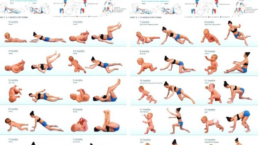Is Sitting the New Smoking?
Australians are spending more time each day sitting. As technology and infrastructure has been improving, more Australians are incorporating less healthy habits into their lifestyle. Sitting may in fact have more in common with smoking than you might think.
What we know
- The average office worker sits for 14 hours a day.
- 63% of Australian adults are now obese and overweight.
- Sitting causes our fat burning ability to drop by 90%
- Sitting increases the risk of developing depression.
- Each hour of continuous sitting reduces life expectancy by 22 minutes
- Risk of developing: Cardiovascular, metabolic diseases and musculoskeletal pain.
It is a common misconception that you can counteract the negative effects of prolonged sitting by just monitoring your diet and exercises. Sitting is harmful when done continuously regardless of lifestyle outside the office.
What can we do?
Fortunately there are a number of simple things we can do to help improve our health and counteract the negatives of sitting.
- Perform Regular stretches throughout the day
- Try to increase the amount of walking done
- Receive advice from a health professional such as a Chiropractor, Physio, OT. Getting care for the musculoskeletal system plus advice on ergonomics and management strategies can be beneficial.
- Regular checkups with your doctor is beneficial as well. Prevention is better than cure.
If you require assistance, feel free to contact us or have a chat with our friendly staff at (08) 9321 1964
Related Posts
Chiropractic Care and Safety
9 June 2016
Recent media reports have questioned the safety of Chiropractic care on children and the greater community. The Chiropractors Association of Australia (CAA) has provided a well-researched article detailing Chiropractors safety record in Australia.
0 Comments1 Minutes


